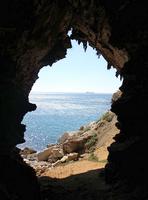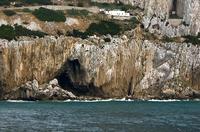You are in: Europe -> United Kingdom. Gibraltar -> Gorham's Cave Complex, and traditional search or Image Gallery will yield results of this site only
Gorham's Cave Complex
| Site number: | 1500 |
|
| Type of site: | Cultural | |
| Date of Inscription: | 2016 | |
| Location: | Europe, UK, Ireland | |
Up to 75 images are shown here. Click on each for more details or on Image Gallery for more images.
Six official UN languages:
Arabic,
Chinese,
English,
French,
Russian,
Spanish
Other languages: Belarusian, Catalan, Cebuano, Croatian, Czech, Dutch, Finnish (suomi), Galician, Georgian, German, Greek, Hebrew, Norwegian-Bokmai, Occitan, Polish, Serbo-Croatian, Siinhala, Swedish, Vietnamese
Other languages: Belarusian, Catalan, Cebuano, Croatian, Czech, Dutch, Finnish (suomi), Galician, Georgian, German, Greek, Hebrew, Norwegian-Bokmai, Occitan, Polish, Serbo-Croatian, Siinhala, Swedish, Vietnamese
| Description: | The steep limestone cliffs on the eastern side of the Rock of Gibraltar contain four caves with archaeological and paleontological deposits that provide evidence of Neanderthal occupation over a span of more than 100,000 years. This exceptional testimony to the cultural traditions of the Neanderthals is seen notably in evidence of the hunting of birds and marine animals for food, the use of feathers for ornamentation and the presence of abstract rock engravings. Scientific research on these sites has already contributed substantially to debates about Neanderthal and human evolution. --WHMNet's description is from WHC Site, where additional information is available. | |
| Gorham's Cave is a natural sea cave in the British Overseas Territory of Gibraltar, considered to be one of the last known habitations of the Neanderthals in Europe. Gorham's Cave gives its name to the Gorham's Cave complex, which is a combination of four distinct caves of such importance that they are combined into a UNESCO World Heritage Site. The three other caves are Vanguard Cave, Hyaena Cave, and Bennett's Cave. It is located on the southeastern face of the Rock of Gibraltar. When first inhabited some 55 thousand years ago, it would have been approximately 5 kilometres from the shore, but, due to changes in sea level, it is now only a few metres from the Mediterranean Sea. The cave is named after Captain A. Gorham of the 2nd Battalion Royal Munster Fusiliers who discovered it in 1907, when opening a fissure at the rear of a sea cavern. Gorham inscribed his name and the date of his discovery in lamp-black on the wall of the cave, which has borne his name ever since. After this initial discovery, it seems the cave was forgotten—at least at an official level—as Gibraltarian historian and potholer George Palao recalls an inscription on the cave wall that read J. J. Davies 1943. --Wikipedia [http://www.wikipedia.org]. Text is available under the Creative Commons Attribution-ShareAlike License. | ||
| Source: | http://whc.unesco.org/en/list/1500 | |
| Source2: | Wikipedia (http://wikipedia.com) | |
| Reference: | 1. UNESCO World Heritage Center (http://whc.unesco.org/en/list/1500). 2. Wikipedia. | |






